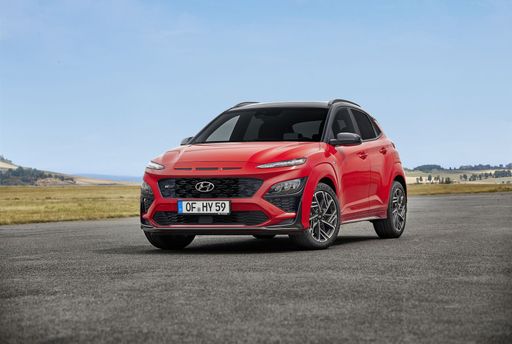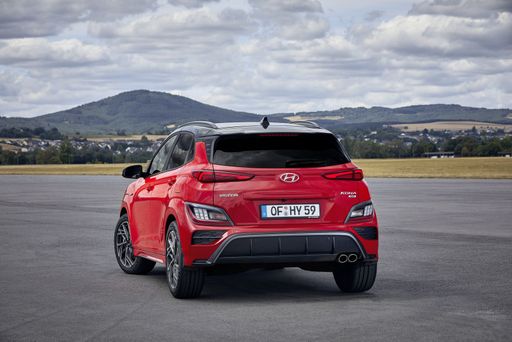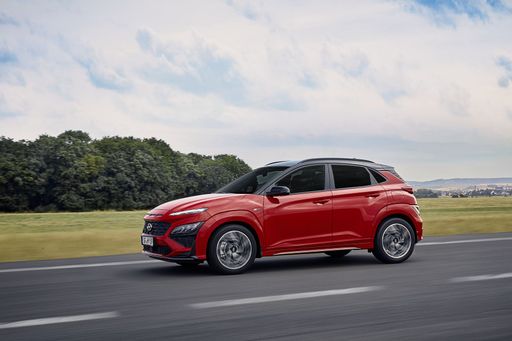Hyundai Kona vs smart #5 – Which one offers the better deal?
Compare performance, boot capacity, efficiency and price at a glance.
Find out which car is the better choice for you – Hyundai Kona or smart #5?
Costs and Efficiency:
Price and efficiency are often the first things buyers look at. Here it becomes clear which model has the long-term edge – whether at the pump, the plug, or in purchase price.
Hyundai Kona has a clearly advantage in terms of price – it starts at 23100 £, while the smart #5 costs 39300 £. That’s a price difference of around 16285 £.
In terms of energy consumption, the advantage goes to the Hyundai Kona: with 14.60 kWh per 100 km, it’s noticeable more efficient than the smart #5 with 18.40 kWh. That’s a difference of about 3.80 kWh.
As for range, the smart #5 performs slightly better – achieving up to 590 km, about 76 km more than the Hyundai Kona.
Engine and Performance:
Under the bonnet, it becomes clear which model is tuned for sportiness and which one takes the lead when you hit the accelerator.
When it comes to engine power, the smart #5 has a significantly edge – offering 646 HP compared to 218 HP. That’s roughly 428 HP more horsepower.
In acceleration from 0 to 100 km/h, the smart #5 is clearly quicker – completing the sprint in 3.80 s, while the Hyundai Kona takes 7.80 s. That’s about 4 s faster.
There’s no difference in top speed – both reach 210 km/h.
There’s also a difference in torque: smart #5 pulls convincingly stronger with 710 Nm compared to 265 Nm. That’s about 445 Nm difference.
Space and Everyday Use:
Beyond pure performance, interior space and usability matter most in daily life. This is where you see which car is more practical and versatile.
Both vehicles offer seating for 5 people.
In curb weight, Hyundai Kona is significantly lighter – 1370 kg compared to 2200 kg. The difference is around 830 kg.
In terms of boot space, the smart #5 offers noticeable more room – 630 L compared to 466 L. That’s a difference of about 164 L.
In maximum load capacity, the smart #5 performs slightly better – up to 1530 L, which is about 230 L more than the Hyundai Kona.
When it comes to payload, smart #5 barely noticeable takes the win – 502 kg compared to 490 kg. That’s a difference of about 12 kg.
Who wins the race?
The smart #5 proves to be outperforms in nearly all aspects and therefore becomes our DriveDuel Champion!
smart #5 is the better all-rounder in this comparison.
smart #5
Hyundai Kona
The Hyundai Kona blends a bold design with a versatile interior, making it a standout choice in the compact SUV market. Its crisp handling and responsive steering provide an engaging driving experience, whether in the city or on the open road. The vehicle also offers a range of features designed to enhance comfort and connectivity, ensuring a pleasurable journey for both driver and passengers.
details @ hyundai.news
@ hyundai.news
 @ hyundai.news
@ hyundai.news
 @ hyundai.news
@ hyundai.news
 @ hyundai.news
@ hyundai.news
smart #5
The Smart #5 continues to build on the brand's legacy of compact and efficient urban vehicles, now infused with a more modern and stylish design. Its sleek appearance is complemented by a spacious interior, offering comfort without compromising its compact nature. This model is ideal for city dwellers seeking a blend of innovation, practicality, and style in their daily drives.
details

|
|
|
|
|
Costs and Consumption |
|
|---|---|
|
Price
23100 - 41600 £
|
Price
39300 - 52200 £
|
|
Consumption L/100km
4.6 - 7 L
|
Consumption L/100km
-
|
|
Consumption kWh/100km
14.6 - 16.8 kWh
|
Consumption kWh/100km
18.4 - 19.9 kWh
|
|
Electric Range
377 - 514 km
|
Electric Range
465 - 590 km
|
|
Battery Capacity
1.3 - 65.4 kWh
|
Battery Capacity
74.4 - 94 kWh
|
|
co2
0 - 163 g/km
|
co2
0 g/km
|
|
Fuel tank capacity
38 - 47 L
|
Fuel tank capacity
-
|
Dimensions and Body |
|
|---|---|
|
Body Type
SUV
|
Body Type
SUV
|
|
Seats
5
|
Seats
5
|
|
Doors
5
|
Doors
5
|
|
Curb weight
1370 - 1773 kg
|
Curb weight
2200 - 2378 kg
|
|
Trunk capacity
466 L
|
Trunk capacity
630 L
|
|
Length
4350 - 4385 mm
|
Length
4695 mm
|
|
Width
1825 mm
|
Width
1920 mm
|
|
Height
1580 - 1585 mm
|
Height
1705 mm
|
|
Max trunk capacity
1300 L
|
Max trunk capacity
1530 L
|
|
Payload
420 - 490 kg
|
Payload
475 - 502 kg
|
Engine and Performance |
|
|---|---|
|
Engine Type
Electric, Petrol, Full Hybrid
|
Engine Type
Electric
|
|
Transmission
Automatic, Manuel
|
Transmission
Automatic
|
|
Transmission Detail
Manual Gearbox, Dual-Clutch Automatic
|
Transmission Detail
Reduction Gearbox
|
|
Drive Type
Front-Wheel Drive, All-Wheel Drive
|
Drive Type
Rear-Wheel Drive, All-Wheel Drive
|
|
Power HP
115 - 218 HP
|
Power HP
340 - 646 HP
|
|
Acceleration 0-100km/h
7.8 - 11.9 s
|
Acceleration 0-100km/h
3.8 - 6.9 s
|
|
Max Speed
162 - 210 km/h
|
Max Speed
200 - 210 km/h
|
|
Torque
200 - 265 Nm
|
Torque
373 - 710 Nm
|
|
Number of Cylinders
3 - 4
|
Number of Cylinders
-
|
|
Power kW
85 - 160 kW
|
Power kW
250 - 475 kW
|
|
Engine capacity
998 - 1598 cm3
|
Engine capacity
-
|
General |
|
|---|---|
|
Model Year
2024 - 2025
|
Model Year
2025
|
|
CO2 Efficiency Class
A, D, C, E, F
|
CO2 Efficiency Class
A
|
|
Brand
Hyundai
|
Brand
smart
|
Is the Hyundai Kona offered with different drivetrains?
Available configurations include Front-Wheel Drive or All-Wheel Drive.
The prices and data displayed are estimates based on German list prices and may vary by country. This information is not legally binding.
